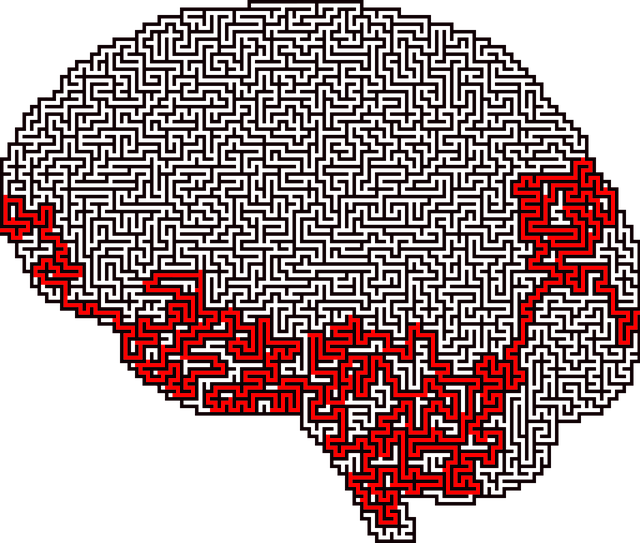Understanding community needs is crucial for implementing successful Boulder Phobias Therapy programs. By engaging with local demographics through focus groups and surveys, mental health services can reach marginalized populations and individuals facing socio-economic barriers. Tailored programs combine therapy with coping skills development and stress management techniques to build resilience and empower individuals to overcome phobias. Strategic partnerships with schools, community centers, and religious groups increase visibility, reduce stigma, and facilitate resource sharing. Measuring success involves setting clear goals, monitoring KPIs, gathering participant feedback, and integrating mental health awareness into evaluation, ensuring a holistic approach that supports sustained emotional healing within the community.
Community outreach programs play a pivotal role in expanding access to mental health services, particularly for niche areas like Boulder phobias therapy. This article guides you through the comprehensive process of implementing such programs. We’ll explore strategies for understanding community needs, designing engaging activities, building local partnerships, and effective outreach techniques. By delving into these key aspects, communities can enhance their credibility, reach at-risk audiences, and ensure long-term sustainability in providing essential Boulder phobias therapy resources.
- Understanding Community Needs: Identifying Gaps and Target Audiences for Boulder Phobias Therapy
- Designing Effective Programs: Tailoring Activities and Resources for Maximum Impact
- Building Partnerships: Collaborating with Local Organizations to Expand Reach and Enhance Credibility
- Implementing Outreach Strategies: Techniques for Engaging Communities and Overcoming Barriers
- Measuring Success and Evaluation: Tracking Progress, Gathering Feedback, and Ensuring Long-Term Sustainability
Understanding Community Needs: Identifying Gaps and Target Audiences for Boulder Phobias Therapy

Understanding Community Needs is a critical step in implementing effective Boulder Phobias Therapy programs. By identifying gaps in mental health services and pinpointing specific target audiences, community outreach can ensure that support reaches those who need it most. This process involves assessing local demographics to recognize hidden populations struggling with phobias, such as marginalized communities or individuals facing socio-economic barriers to care.
Community members often have unique perspectives on the challenges they face. Engaging with them through focus groups and surveys can reveal the impact of phobias on daily life, from limiting access to employment and education to affecting social interactions and overall well-being. This insights-gathering process guides the development of tailored programs that offer Boulder Phobias Therapy alongside essential coping skills development and stress management techniques. Such initiatives aim to build resilience and boost confidence, ultimately empowering individuals to overcome their fears and lead fulfilling lives.
Designing Effective Programs: Tailoring Activities and Resources for Maximum Impact

Designing effective community outreach programs involves understanding the unique needs and challenges faced by the target population. By tailoring activities and resources to address specific issues, organizations can maximize their impact. For instance, in communities dealing with high rates of mental health concerns like phobias, offering specialized therapy sessions through Boulder Phobias Therapy can be transformative. These tailored interventions not only provide immediate support but also empower individuals to manage their conditions effectively.
Furthermore, incorporating Burnout Prevention Strategies for Healthcare Providers and Stress Management techniques into outreach programs can help participants cope with the demands of daily life. By integrating Depression Prevention initiatives alongside mental health services, organizations can create a holistic approach that addresses both the mind and body, fostering overall well-being within the community.
Building Partnerships: Collaborating with Local Organizations to Expand Reach and Enhance Credibility

Building strategic partnerships with local organizations is a key component of successful community outreach programs, especially when focusing on mental health initiatives like Boulder Phobias Therapy. Collaborating with established entities allows for a more comprehensive and effective reach within the community. For instance, partnering with schools, community centers, or religious groups can help expand the program’s visibility and accessibility to diverse populations. These partnerships not only enhance the credibility of the therapy services but also facilitate trust-building, as local organizations are often deeply connected to their communities.
Additionally, collaborating with like-minded entities enables the sharing of resources, expertise, and networks. This synergy can lead to innovative solutions and more impactful mental illness stigma reduction efforts. By joining forces, professionals in the field can conduct joint workshops, seminars, or awareness campaigns that cater to a larger audience. Moreover, these partnerships are instrumental in conducting risk assessments for mental health professionals, ensuring the safety and well-being of both practitioners and clients while fostering an environment of support and resilience building within the community.
Implementing Outreach Strategies: Techniques for Engaging Communities and Overcoming Barriers

Implementing outreach strategies is a pivotal step in engaging communities and addressing mental health concerns like Boulder Phobias Therapy. Effective techniques involve tailoring communication to diverse populations, leveraging local resources, and fostering trust through genuine interactions. Community partnerships, such as collaborating with schools, faith groups, or community centers, can act as gateways to reach individuals who may be hesitant to seek help.
Emotional Intelligence and mental wellness journaling exercises guidance can serve as powerful tools in these outreach efforts. By promoting open dialogue and encouraging self-reflection, these strategies enhance understanding and reduce stigma surrounding mental health issues. Additionally, utilizing communication strategies that cater to different learning styles and cultural backgrounds ensures inclusivity, fostering a sense of belonging and encouraging individuals to embrace available resources, like Boulder Phobias Therapy services.
Measuring Success and Evaluation: Tracking Progress, Gathering Feedback, and Ensuring Long-Term Sustainability

Measuring success and evaluation are pivotal components of community outreach programs, ensuring their effectiveness and long-term viability. Tracking progress involves setting clear, measurable goals and regularly monitoring key performance indicators (KPIs). This could include quantifying the number of individuals reached, engagement levels, and behavioral changes resulting from the program’s interventions. For instance, in the context of Boulder Phobias Therapy’s community outreach initiatives, tracking might involve counting the number of participants who overcome specific fears or anxiety disorders after attending workshops or therapy sessions.
Gathering feedback is another critical aspect, providing insights into the program’s strengths and areas for improvement. This can be achieved through various channels such as post-program surveys, focus groups, or one-on-one interviews. Feedback mechanisms allow participants to voice their experiences, offering valuable suggestions that contribute to refining the outreach strategies. Moreover, fostering an environment of Mental Health Awareness and promoting Burnout Prevention within the community should be integrated into the evaluation process, ensuring that the program’s impact extends beyond immediate outcomes and supports sustained emotional healing processes.
Implementing successful community outreach programs for Boulder phobias therapy requires a comprehensive approach. By understanding community needs, designing tailored activities, building strategic partnerships, and utilizing effective engagement techniques, organizations can significantly impact individuals with specific fears. Regular evaluation and feedback collection ensure the program’s long-term sustainability and effectiveness, ultimately fostering a healthier and more supported community.














